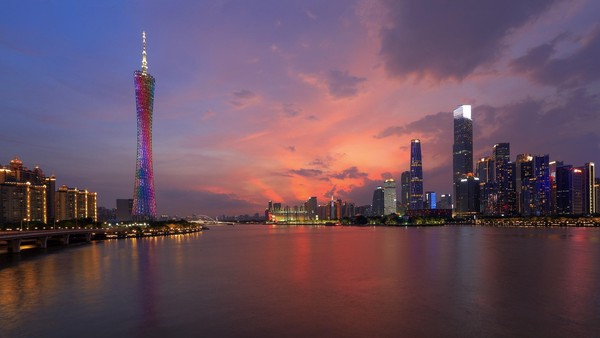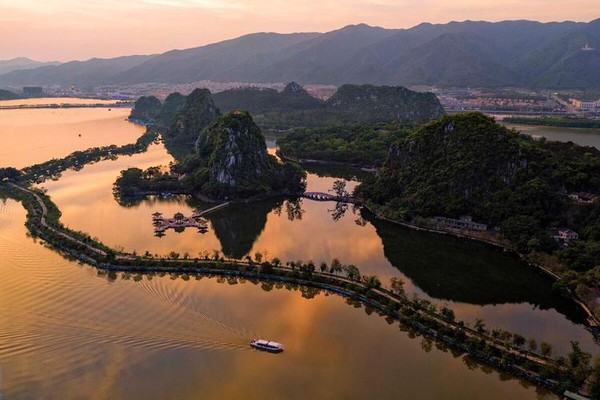Gastprovinz Guangdong

Geography
Guangdong province is located in the southernmost part of the Chinese mainland.

It adjoins Fujian province in the east and Jiangxi and Hunan provinces in the north. To the west, it is Guangxi Zhuang autonomous region, and to the south the South China Sea. China’s second-largest river - the Pearl River - flows through Guangdong. To the east of the Pearl River Estuary, it is the Hong Kong Special Administrative Region and to the west, Macao Special Administrative Region. The southwestern Leizhou Island in Guangdong is separated from Hainan province by the Qiongzhou Strait. Covering an area of 179,700 square kilometers, of which 1,448 sq km are islands, the province has 21 prefecture-level cities. Guangdong is the province with the most complete representation of ethnic groups in China. The population of ethnic groups accounts for 3 percent of the total in the province, and mainly consists of the Zhuang, Yao, She, Hui and Man ethnic groups.
History
According to archaeological information, the history of the Guangdong people can be dated back to the Maba people, who lived around 100,000 years ago.
During the Shang and Western Zhou dynasties (c. 16th century - 771 BC), Guangdong ancestors started trading and cultural exchanges with the Shang and Zhou kingdoms in Central Plains (comprising the middle and lower reach of the Yellow River). In 221 BC, Guangdong underwent an administrative division for the first time. After the establishment of the People’s Republic of China, Guangdong made mild administrative adjustment based on historical divisions. In 1988, the province was divided into 18 (later 21) prefecture-level cities and applied a system whereby the prefecture-level cities manage the counties and the towns manage villages. The management system is used to this day.
Economy
Guangdong is one of the frontiers of China’s reform and opening-up policy.
It is one of the most attractive places for investors with a great deal of market vigor. In 2022, Guangdong’s GDP reached 12.9 trillion yuan ($1.9 trillion), up by 1.9 percent year-on-year. Its GDP has ranked highest in the country for 34 consecutive years. The province’s foreign trade set a record last year, despite the challenging global situation, edging up 0.5 percent year-on-year to 8.31 trillion yuan.
Air quality
The air quality in Guangdong has maintained an excellent level in China.
The quality rate air quality index (AQI) in the Pearl River Delta varies from 66.8 percent to 89.0 percent, with an average of 75.1. The share of the days with excellent air quality in other cities accounts for 50 percent annually, suitable for working and living.
Culture
Guangdong is the first province in China to conduct maritime trade and international migration.

More than 30 million overseas Chinese from 160 countries and regions attribute their hometown to Guangdong. With the combination of overseas Chinese culture and local culture, the culture in Guangdong is unique and an important part of the Lingnan culture. The folk arts and customs also lay a rich foundation for Guangdong culture.
Tourism
Guangdong’s unique geographic and climate features are rich tourist resources.
By June 2022, the province was home to 15 national 5A-level tourism attractions, 192 4A-level tourist attractions, 377 3A-level attractions and 13 2A-level attractions. Well-known tourist sites, such as the Guangzhou Chimelong Holiday Resort and the Shenzhen OCT (Overseas Chinese Town) East Resort are now home to different kinds of international activities and events.




